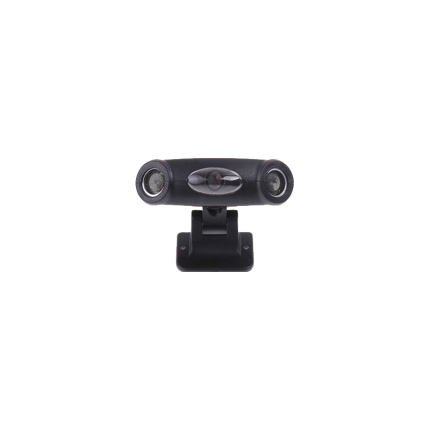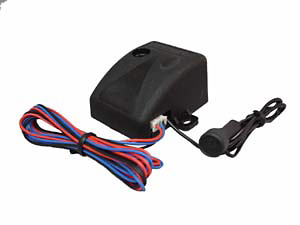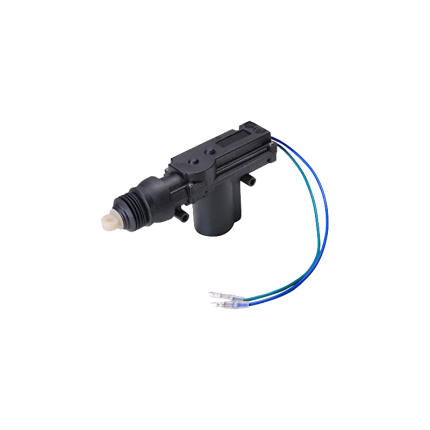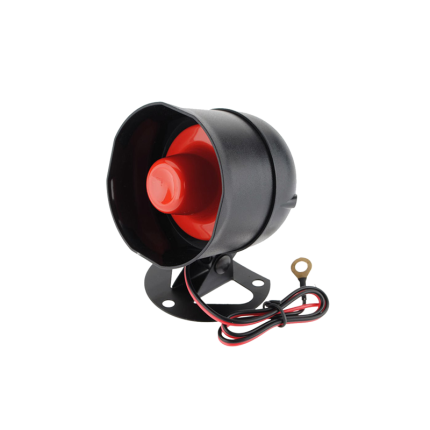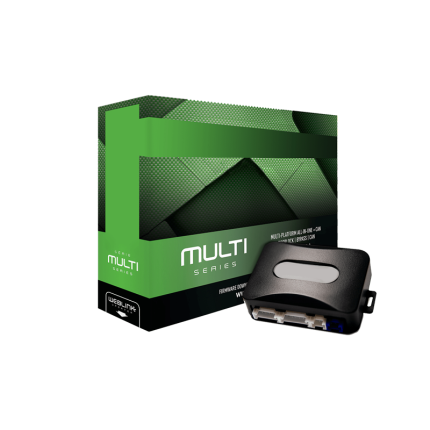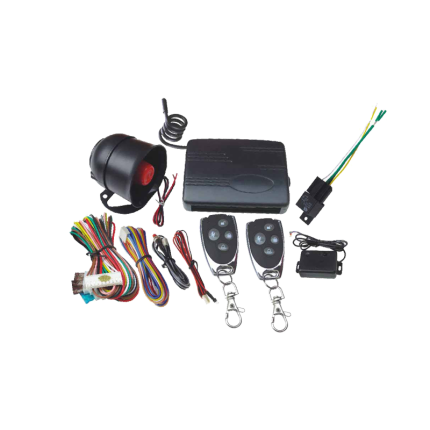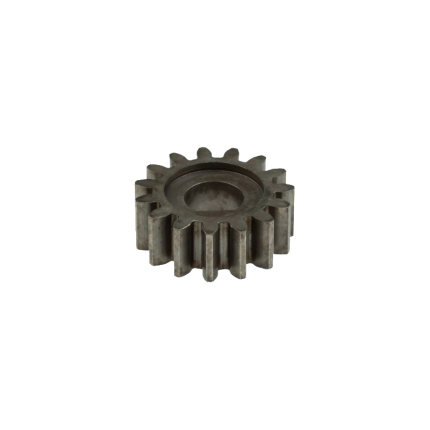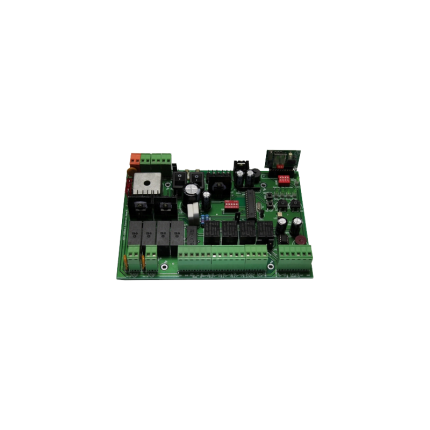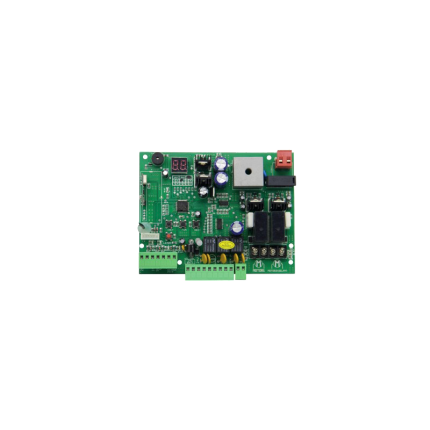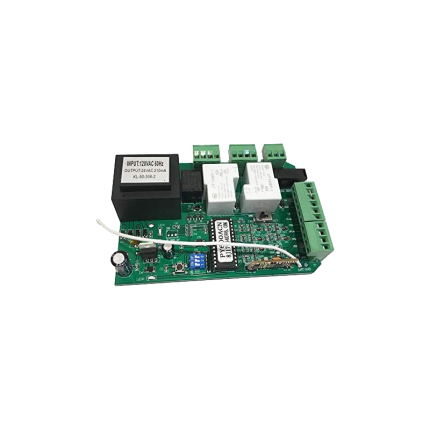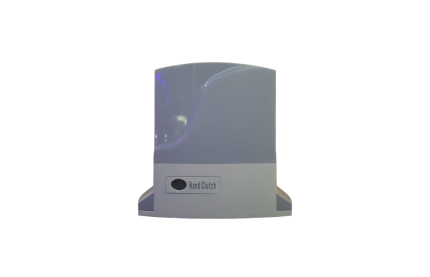Shop
Vehicle alarm ultrasonic sensor
Ship or pick up from our office.
Vehicle alarm ultrasonic sensor
A vehicle alarm ultrasonic sensor is a type of motion sensor used in car alarm systems to detect movement within the interior of a vehicle when the alarm is armed. It's designed to provide an extra layer of security by catching intruders who might try to gain access by breaking a window or otherwise entering the cabin without opening a door. Here's how it generally works:- Emission of Ultrasonic Waves: When the car alarm system is armed, the ultrasonic sensor (or typically a pair of sensors, one on each side of the front of the vehicle, often mounted on the A-pillars) emits high-frequency sound waves. These sound waves are beyond the range of human hearing, hence "ultrasonic." These waves fill the interior space of the vehicle.
- Monitoring for Echoes: The sensor continuously monitors the echoes of these sound waves as they bounce off the surfaces within the car's cabin (seats, dashboard, windows, roof, etc.). This creates a consistent pattern of reflected waves.
- Detection of Disturbance: If an intruder enters the vehicle, or if there's any significant movement within the cabin (e.g., someone reaches in through a broken window, or a pet is left inside and moves around), this movement disrupts the established pattern of the ultrasonic waves. The sound waves bounce back differently, indicating a change in the air pressure or the environment within the car.
- Alarm Trigger: When the sensor detects this disturbance or change in the reflected wave pattern, it signals the car's alarm system. The alarm then triggers, typically sounding the horn, flashing the lights, and in some cases, activating a dedicated siren.
- Interior Protection: Its primary purpose is to detect intrusion into the passenger compartment, complementing other sensors like door, hood, and trunk sensors.
- Invisible Barrier: It creates an "invisible" protective barrier within the vehicle's cabin.
- Sensitivity: Ultrasonic sensors are quite sensitive and can detect even minor movements, which makes them effective against various forms of unauthorized entry.
- False Alarm Reduction: Quality ultrasonic sensors are designed to minimize false alarms. However, factors like leaving windows open, a sunroof ajar, or having pets or large insects inside the car can sometimes trigger them.
- Compatibility: They are often integrated into factory-installed alarm systems in newer vehicles, but can also be added as aftermarket components to enhance existing security systems.
- Adjustable Sensitivity: Many systems allow for adjustment of the sensor's sensitivity to tailor its performance to different environments or situations.
- Not for Convertibles: Due to their reliance on enclosed air space and reflected sound waves, ultrasonic sensors are generally not suitable for convertibles or vehicles with soft tops, as the open or flexible roof would not properly reflect the sound waves, leading to false alarms or ineffective monitoring.
Glass Break Sensor
Ship or pick up from our office.
Glass Break Sensor
A glass break sensor is a security device that detects when glass is shattered or broken, commonly used in home and business alarm systems. 🏠 It provides an additional layer of security by triggering an alarm if an intruder attempts to gain entry by breaking a window or glass door. How it Works Glass break sensors primarily work by detecting either the sound or vibrations associated with breaking glass. Acoustic Glass Break Sensors These sensors use a microphone to listen for the specific frequencies and amplitude patterns produced when glass shatters. More advanced acoustic sensors employ a two-step process: they first "wake up" when a certain sound amplitude is reached, and then analyze the sound to identify statistical similarities to known glass-breaking profiles. This helps minimize false alarms from other loud noises like barking dogs or slamming doors. They are usually mounted on a wall or ceiling within a certain range (e.g., 20-25 feet) of the windows they are protecting. Shock Glass Break Sensors Unlike acoustic sensors, shock sensors are placed directly on the glass itself. They detect the vibrations caused by an impact on the glass. If the vibrations exceed a set threshold, the alarm is triggered. These sensors can also alert you if someone bangs on the window without actually breaking it. Dual Glass Break Sensors Some sensors combine both acoustic and shock detection technologies, requiring both the sound and vibration of breaking glass to trigger an alarm. This further reduces the likelihood of false alarms. Why Use a Glass Break Sensor? Glass break sensors offer several key advantages:- Early Detection: They trigger an alarm as soon as the glass is broken, potentially before an intruder has even fully entered the property. This is a significant advantage over motion sensors, which only activate once an intruder is already inside.
- Enhanced Perimeter Security: While door and window sensors detect when an opening is forced, glass break sensors cover the scenario where an intruder smashes through the glass rather than opening the door or window.
- Night Protection: Many homeowners deactivate motion sensors at night to avoid false alarms from their own movement. Glass break sensors can remain armed, providing protection even when other internal sensors are off.
- Deterrence: Visible glass break sensors can act as a deterrent, discouraging would-be intruders from attempting a break-in through windows.
- Vs. Door/Window Sensors: Door and window sensors detect when an opening is breached (i.e., when a door or window is opened). Glass break sensors, conversely, detect when the glass itself is broken, protecting against forced entry where the opening isn't used.
- Vs. Motion Sensors: Motion sensors detect movement within a room. While effective, they only trigger an alarm once an intruder is already inside. Glass break sensors offer earlier detection by alarming at the point of entry (the window or glass door). For comprehensive security, it's often recommended to use a combination of these sensor types.
Vehicle central door lock actuator
Ship or pick up from our office.
Vehicle central door lock actuator
A vehicle central door lock actuator is the electromechanical component responsible for physically locking and unlocking your car's doors when you press a button on your key fob, the interior door switch, or when the central locking system otherwise activates (e.g., speed-sensitive locking). Think of it as the "muscle" of your car's power door locks. Here's a more detailed breakdown: How it Works:- Signal Transmission: When you press the lock or unlock button on your key fob (remote control) or the switch inside the car, a radio frequency signal or an electrical signal is sent to the vehicle's Electronic Control Unit (ECU), often referred to as the Body Control Module (BCM).
- Processing by ECU: The ECU decodes this signal and determines whether the command is to lock or unlock the doors.
- Actuator Activation: The ECU then sends an electrical current to the door lock actuator located inside each door.
- Mechanical Movement: The actuator contains a small electric motor, a set of gears, and linkages (or sometimes a cable).
- When the motor receives the electrical current, it rotates in one direction to engage the locking mechanism (locking the door) or in the opposite direction to disengage it (unlocking the door).
- The gears amplify the motor's force, and the linkages convert the rotational motion of the motor into the linear or pivotal motion needed to move the door latch and lock/unlock the door.
- Feedback (Optional): Some systems provide feedback, such as a light flash or a horn chirp, to confirm that the doors have been locked or unlocked.
- Electric Motor: A small, reversible DC motor that provides the power.
- Gear Train: A series of gears that transmit and multiply the motor's torque to move the locking mechanism.
- Linkages/Cable: Connect the internal mechanism of the actuator to the door's actual latching mechanism.
- Electrical Contacts/Switches: These are inside the actuator and tell the ECU the current state of the lock (locked or unlocked).
- Housing: Encapsulates and protects all the internal components.
- Motor-driven Actuators (Most Common in Modern Cars): As described above, these use a small electric motor and gears. They offer precise control and are generally durable.
- Solenoid-driven Actuators (Older or Simpler Systems): These use an electromagnetic coil (solenoid) to create a rapid, linear pulling or pushing motion. They are typically simpler but can be less robust for frequent use.
- Convenience: Allows for simultaneous locking or unlocking of all doors with a single action, eliminating the need to manually lock each door.
- Security: Ensures all doors are properly locked, preventing unauthorized access.
- Safety: Modern systems often include features like:
- Speed-sensitive locking: Doors automatically lock when the vehicle reaches a certain speed.
- Automatic re-locking: If you unlock the car but don't open a door within a certain time, the doors will re-lock automatically.
- Anti-theft features: Some systems disable interior release levers when "double locked" to prevent entry even after glass breakage.
- Remote Keyless Entry: Integral to the operation of key fob remotes.
- Inconsistent Locking/Unlocking: One or more doors don't respond reliably to the lock/unlock command from the fob or interior switch.
- Unusual Noises: Clicking, grinding, buzzing, or whirring sounds coming from inside the door when trying to lock or unlock. This often indicates worn gears or a struggling motor.
- Sluggish Operation: The door lock moves slowly or with a delay.
- Door Stays Locked or Unlocked: A specific door might be stuck in the locked or unlocked position, even when the rest of the car responds. You might still be able to operate it manually.
- Random Locking/Unlocking: The door might lock or unlock itself without input.
- "Door Ajar" Warning Light: In some cases, a faulty actuator (specifically, a worn internal switch) can cause the "door open" warning light to stay on even when the door is closed, or trigger the car alarm.
Siren
Ship or pick up from our office.
Siren
A siren is a noise-making warning device designed to produce a loud, often piercing or fluctuating sound to alert people to an emergency, an approaching threat, or to draw attention to a specific situation. Sirens are characterized by their ability to generate high sound pressure levels (decibels) that can be heard over long distances and through various obstacles. There are two main types of sirens:- Mechanical (or Pneumatic) Sirens:
- How they work: These sirens produce sound by physically chopping or interrupting a flow of air. They typically consist of a rotating disk (rotor) with holes or slots, which spins rapidly past fixed holes or slots on a stationary casing (stator). As the rotor spins, it alternately allows and blocks air to pass through, creating pulsating air pressure waves that we perceive as sound. The pitch of the siren changes with the speed of the rotor and the number of holes.
- Characteristics: Often produce a characteristic "wailing" or "growling" sound. They can be very loud and consume significant power.
- Uses: Traditionally used as large outdoor warning sirens (e.g., air-raid sirens, tornado sirens) and on older emergency vehicles. You might still hear them in some older industrial settings as well.
- Electronic Sirens:
- How they work: These are the most common type found in modern applications. They generate sound electronically using circuits like oscillators, modulators, and amplifiers. These circuits synthesize various siren tones, which are then played through powerful external speakers.
- Characteristics: Highly versatile, able to produce a wide range of distinct tones (e.g., Wail, Yelp, Phaser/Piercer, Hi-Lo, Air Horn, Manual), and can often include voice announcements. They are generally more compact, consume less power than large mechanical sirens, and are easier to control.
- Uses:
- Emergency Vehicles: Police cars, ambulances, fire engines, and other emergency response vehicles use electronic sirens to alert traffic and pedestrians to their presence and urgency. Different tones are often used for different situations (e.g., Wail for distant approach, Yelp for closer proximity or heavy traffic, Air Horn for immediate attention).
- Vehicle Alarms: Car alarms commonly use a smaller, electronic siren (or the vehicle's horn) to sound a loud alert when triggered by a sensor (like a shock sensor, door sensor, or ultrasonic sensor).
- Security Systems: Residential and commercial alarm systems use sirens to deter intruders and alert occupants and neighbors to a security breach.
- Industrial and Safety Alarms: Used in factories, construction sites, and other workplaces to signal shift changes, emergencies, or specific warnings.
- Civil Defense/Public Warning Systems: Modern outdoor warning systems often use large electronic sirens that can broadcast specific tones and even pre-recorded voice messages for events like severe weather, hazardous material spills, or other public safety alerts.
Remote starter immobilizer bypass module
Ship or pick up from our office.
Remote starter immobilizer bypass module
A remote starter immobilizer bypass module is an essential component when installing an aftermarket remote car starter in most modern vehicles. Its sole purpose is to "trick" the vehicle's factory immobilizer system into believing that the correct key is present in the ignition, allowing the engine to start remotely. Here's a breakdown of what that means: What is a remote starter immobilizer bypass module system? Since around the late 1990s, and mandated for all new cars sold in Canada since the year 2000, virtually every vehicle is equipped with an electronic immobilizer system as an anti-theft measure. This system prevents the engine from starting unless it detects a specific, valid code.- How it works:
- Your car key (or smart key fob) contains a small electronic chip called a transponder. This chip stores a unique electronic code.
- When you insert the key into the ignition (or, with push-button start, have the fob within range), the vehicle's onboard computer (often via an antenna coil around the ignition barrel) reads the code from the transponder.
- If the code matches what's stored in the vehicle's ECU (Engine Control Unit), the remote starter immobilizer bypass module is deactivated, and the engine is allowed to start and run.
- If the code doesn't match, or if no valid code is detected (e.g., someone tries to hot-wire the car, or uses an unprogrammed key), the immobilizer will prevent the engine from starting, or it will start for a few seconds and then immediately shut off. It typically disables vital functions like the fuel pump or ignition system.
Car remote starter – ProStart
Ship or pick up from our office.
Car remote starter - ProStart
ProStart is a brand of aftermarket car remote starters, primarily known for being sold at Canadian Tire in Canada. They offer systems that allow you to start your car remotely, typically using a key fob, for convenience and comfort, especially in climates with extreme temperatures. Here's a breakdown of what a ProStart car remote starter generally offers: Core Functionality:- Remote Engine Start: The primary feature, allowing you to start your vehicle from a distance. This is great for warming up your car in winter or cooling it down in summer before you even get in.
- Keyless Entry: Many ProStart systems integrate with your vehicle's door locks, allowing you to lock and unlock your doors using the remote.
- Trunk Release: Some models include a button for remotely opening your trunk.
- Compatibility: ProStart remote starters are designed to work with both manual and automatic transmissions, as well as gas and diesel engines. However, manual transmission vehicles typically require additional safety protocols to be enabled (like a "ready mode" that ensures the car is in neutral and the parking brake is engaged before remote starting).
- Range: Depending on the model, ProStart remotes can offer varying ranges, from a few hundred feet up to 1600 feet (490 meters) or more.
- Integrated Alarm System: Many ProStart kits come with a basic alarm system, including features like:
- Shock Sensor: Detects impacts and can trigger a warning chirp or full alarm.
- Siren and LED Notification: Visual and auditory alerts if the alarm is triggered.
- Starter Kill: Disables the vehicle's starter to prevent theft.
- Cold Weather Mode: Some systems can be programmed to automatically start the engine at intervals to maintain a comfortable temperature in extreme cold, helping to prevent battery drainage.
- Idle Mode: Allows the user to leave the vehicle running and protected while they step away (e.g., for a quick stop), with doors locked.
- Two-Way Communication: Higher-end models may offer two-way remotes that provide feedback from the vehicle (e.g., confirming the car started, locked, or if the alarm was triggered) via an LED or LCD screen on the remote.
- SmartStart Compatibility: Certain ProStart systems can be paired with a smartphone app (like iDatalink's SmartStart or similar) for remote control functions via your phone, offering unlimited range (as long as you have cellular service).
- Programmable Run Time: You can typically set how long the engine will run after a remote start (e.g., 10, 15, 20 minutes) before automatically shutting off.
- Interface Module Requirement: Most modern vehicles require an interface module (like the iDatalink ADS-TB discussed previously) to allow the remote starter to communicate with the vehicle's onboard computer and bypass the immobilizer system. This module is usually sold separately.
- Remote starters involve complex wiring and integration with your vehicle's electrical system. While some experienced DIYers might attempt it, professional installation by a certified technician is generally recommended to ensure proper function and avoid damage to your vehicle.
Car alarm system
Ship or pick up from our office.
Car alarm system
A car alarm system is an electronic device installed in a vehicle primarily to deter theft of the vehicle itself or its contents. It works by emitting a high-volume sound (often a siren, the car's horn, or a combination) and sometimes flashing the vehicle's lights when conditions for triggering it are met, alerting the owner and potentially scaring off thieves. How Car Alarm Systems Work: Car alarms generally consist of three main components working together:- Control Unit (Brain): This is the central processing unit of the alarm system. It receives signals from various sensors, processes them, and, if it detects unauthorized activity, triggers the alarm. It's essentially the "computer" that manages all the system's functions.
- Sensors: These are the "eyes and ears" of the alarm, constantly monitoring the vehicle for signs of intrusion or tampering. Common types of sensors include:
- Door/Trunk/Hood Sensors: These detect when a door, trunk, or hood is opened without authorization. They often work by detecting a change in an electrical circuit, similar to how your dome light turns on when a door is opened.
- Shock Sensors: These detect impacts or vibrations to the vehicle. A gentle bump might trigger a warning chirp, while a harder impact (like a window breaking or someone trying to tow the car) will trigger the full alarm.
- Glass Break Sensors: These specifically listen for the distinctive sound frequency of breaking glass.
- Motion/Proximity Sensors: These detect movement inside or outside the vehicle, often used in convertibles or vehicles with open interiors.
- Tilt Sensors: These detect if the vehicle is being tilted or lifted, such as during a towing attempt or when someone tries to jack up the car to steal wheels.
- Siren/Horn: This is the audible output of the alarm system. When triggered by the control unit, it emits a loud, piercing sound to draw attention and scare away intruders. Aftermarket sirens are often louder than a vehicle's factory horn.
- OEM (Factory-Installed) vs. Aftermarket:
- OEM alarms are built into the vehicle at the factory and typically offer basic features like monitoring doors, trunk, and ignition for unauthorized entry.
- Aftermarket alarms are installed after the car is built and can offer a much wider range of features, sensors, and customization options.
- Active vs. Passive Systems:
- Active alarms require the user to manually arm and disarm them (e.g., by pressing a button on a key fob).
- Passive alarms automatically arm themselves under certain conditions, such as when the car is locked, the engine is turned off, or the key fob moves out of range.
- One-Way vs. Two-Way Remotes:
- One-way remotes send commands to the car (lock, unlock, arm alarm) but don't receive feedback.
- Two-way remotes can send commands and also receive confirmation or alerts from the vehicle (e.g., "alarm triggered," "doors locked"). Some even have LCD screens displaying vehicle status.
- Integration with Other Security Features:
- Remote Start: Many modern alarm systems integrate with remote start functionality, allowing you to start your car from a distance while keeping it secure.
- Immobilizers: While distinct from alarms, many advanced security systems incorporate immobilizers, which prevent the engine from starting without the correct key or transponder, making hot-wiring virtually impossible.
- GPS Tracking: Some high-end systems include GPS tracking, allowing you to locate your vehicle in real-time if it's stolen and send alerts to your smartphone.
- Smartphone Integration: Many systems offer mobile apps that allow you to arm/disarm the alarm, check vehicle status, and receive alerts directly on your phone.
- Kill Switches: These can disable specific electrical circuits, making it difficult for a thief to start the engine.
Sliding gate operator gear
Ship or pick up from our office.
Sliding gate operator gear
The sliding gate operator gear is a crucial component within an automatic sliding gate system. It's essentially the mechanism that translates the rotational power from the electric motor into the linear motion needed to open and close a sliding gate. Here's how it generally works:- Pinion Gear: Inside the gate operator's housing, there's a pinion gear. This is a small, typically round gear directly connected to the motor. When the motor turns, it rotates the pinion gear.
- Rack Gear: Attached to the bottom edge of the sliding gate itself is a rack gear. This is a long, straight bar with teeth that mesh with the teeth of the pinion gear.
- Translating Motion: As the motor spins the pinion gear, its teeth engage with the teeth on the rack gear. This engagement causes the rack gear (and thus the entire gate) to move horizontally along its track. It's similar to how a train moves along a toothed railway or a car's steering rack works.
Swing gate operator control board SWRG110
Ship or pick up from our office.
Swing gate operator control board SWRG110
The SWRG110 is a universal swing gate operator control board designed to manage the operation of AC (Alternating Current) powered swing gate motors. It's essentially the "brain" of a swing gate automation system, responsible for controlling the gate's movement, safety features, and integration with various accessories. It's often marketed as a replacement or upgrade board due to its broad compatibility with different AC swing gate openers, particularly those operating at 110V or 220V. Key Features and Functionality The SWRG110, as a universal control board, typically offers a range of features for efficient and safe gate operation:- Motor Control: It manages the power supply and direction of one or two AC gate motors, allowing for opening and closing cycles. It can be used for both single and double swing gates.
- Soft Start/Stop: This feature ensures a smooth and gradual acceleration and deceleration of the gate, reducing wear and tear on the motor and mechanical components, and providing quieter operation.
- Obstacle Detection: A crucial safety feature, obstacle detection allows the gate to stop or reverse if it encounters an obstruction during its movement, preventing damage to the gate, vehicle, or injury to people or pets. This is often achieved through current sensing or external safety sensors like photocells.
- Automatic Close: This function allows the gate to automatically close after a set period of time, enhancing security and convenience.
- Limit Switches: The board interfaces with limit switches (often magnetic or mechanical) to define the full open and full closed positions of the gate, ensuring precise stopping.
- Remote Control Learning: It typically has a learning function to pair with wireless remote controls, allowing users to open and close the gate from a distance.
- Accessory Interfaces: The SWRG110 provides terminals for connecting various gate accessories, such as:
- Photocells/Infrared Sensors: For enhanced safety and obstacle detection.
- Warning Lights: To signal gate movement.
- Keypads/Intercoms: For controlled access.
- GSM Modules/Phone APP integration: Some versions may offer connectivity for remote control via smartphone.
- Wall Buttons: For manual operation from inside the property.
- Exit Wands/Vehicle Sensors: To automatically open the gate for exiting vehicles.
- Adjustable Settings: Many control boards like the SWRG110 offer adjustable parameters, such as:
- Motor power/force (especially for obstacle detection sensitivity).
- Slowdown speed.
- Automatic close timer.
- Working time for each motor.
- Diagnostic Display: Some models include an LED or LCD display for easier setup, programming, and troubleshooting of errors.
- AC Powered Motors: Specifically, 110V or 220V AC swing gate motors. It's not compatible with DC (12V or 24V) motors.
- Various Gate Opener Models: It can replace control boards in numerous existing swing gate openers, such as some ALEKO and Lockmaster models.
- Power Disconnection: Safely disconnecting power to the gate opener.
- Wiring: Connecting the motor, power supply, and accessories to the appropriate terminals on the SWRG110 board. Understanding terminal functions is crucial for correct wiring.
- Programming: Learning remote controls and adjusting settings (e.g., limit switch calibration, auto-close time) according to the specific gate and desired operation.
Swing gate operator control board SWRG24
Ship or pick up from our office.
Swing gate operator control board SWRG24
The SWRG24 is a universal 24V DC main control board for swing gate operators. This means it's designed to be adaptable and compatible with a wide variety of 24-volt direct current swing gate systems, rather than being specific to one brand or model. Here's a breakdown of its key features and functionalities: Key Features- 24V DC Operation: The SWRG24 operates on a 24-volt direct current power supply, which is common in many modern gate systems, especially those that might incorporate battery backup for operation during power outages.
- Universal Compatibility: It's designed to work with various swing gate openers and systems, offering versatility for different installations. This often means it can replace a damaged board in an existing system or be used as the control center for a custom gate setup.
- Programmable and Adjustable Settings: The board is fully programmable, allowing installers and users to customize various operational parameters. These often include:
- Resistance Sensitivity: Adjusts how much force the gate encounters before stopping or reversing, crucial for safety.
- Motor Working Time: Sets the maximum time the motor will run for opening or closing, preventing over-rotation or damage.
- Auto-Closing Time: Configures a delay after opening before the gate automatically closes, enhancing convenience and security.
- Motor Output Power: Allows for fine-tuning the motor's strength to suit the gate's weight and size.
- Soft Start/Stop: This feature typically provides a gradual acceleration and deceleration of the gate, reducing wear and tear on the motor and hardware, and providing smoother operation.
- Quick Close/Anti-Tailgate: Some models may include features to close the gate immediately after a vehicle passes, preventing unauthorized vehicles from following closely behind.
- Digital Display: Many SWRG24 boards feature a digital display (often a digital tube display), which simplifies the process of adjusting settings, troubleshooting, and monitoring the system's status.
- Compatibility with Accessories: It typically has terminals and inputs for connecting a range of safety and access control devices, such as:
- Photocells/Infrared Sensors: Essential safety devices that detect obstructions in the gate's path and prevent it from closing on people or objects.
- Loop Detectors: Used to detect vehicles approaching or exiting the gate, triggering opening or closing.
- Push Buttons/Keypads: For manual operation or coded access.
- Remote Controls: For wireless operation.
- Warning Lights/Alarms: For signaling gate movement or entrapment.
- Safety Compliance: Modern gate control boards like the SWRG24 are often designed to comply with safety standards like UL325, which requires the use of entrapment protection devices.
- Potential for Battery Backup: As a 24V DC system, it's often designed to integrate with battery backup systems, ensuring continued operation during power outages.
- Residential Gates: For homeowners seeking automated access and enhanced security.
- Commercial and Industrial Gates: For businesses and facilities with higher traffic demands, where reliable and secure access is critical.
Sliding gate operator control board SLRG110
Ship or pick up from our office.
Sliding gate operator control board SLRG110
The SLRG110 is a universal main control board for sliding gate operators that runs on 110-volt AC power.
It acts as the "brain" of a sliding gate system, managing its core functions.
Here's a breakdown of what the SLRG110 offers:
Core Functionality
- Motor Control: It receives signals from various access devices (like remote controls or keypads) and translates them into commands to control the gate's motor, initiating opening, closing, and stopping movements.
- Power Management: It receives power from a 110V AC source and directs it to the gate motor and other connected accessories.
- Adjustable Settings: The board typically allows for customization of gate operation, including:
- Adjustable speed settings for both opening and closing.
- Adjustable auto-close timer (e.g., 0, 30, 60, 90 seconds).
- Adjustable torque and closing force to suit different gate weights and preferences.
- Ability to add and delete remote controls easily.
- Option to set auto-close when power is restored after an outage.
Key Features & Safety
- Obstruction Detection: A crucial safety feature, the SLRG110 can detect obstructions in the gate's path during movement and automatically stop or reverse the gate to prevent damage or injury.
- This often utilizes infrared detection connectors for photocells.
- Remote Control Capability: It's designed to work seamlessly with remote controls for convenient operation.
- Emergency Release: The system usually includes an emergency release key for manual operation in case of power failure.
- Limit Switches: It connects to limit switches (often magnetic) that define the gate's fully open and closed positions, preventing overtravel.
- Accessory Inputs: The board has various input terminals for connecting additional accessories like:
- Photocells (safety beams)
- Manual push buttons
- Wired keypads
- GSM inputs (for remote access via mobile networks)
- Vehicle sensor exit wands
Universal Compatibility
The SLRG110 is considered a universal control board, meaning it's designed to be compatible with a wide range of sliding gate opener models.
This makes it a versatile replacement option for existing systems. It can operate gates weighing up to approximately 1750-1760 lbs.
Sliding gate opener -Royalgate RGSL0.5TN24
Ship or pick up from our office.
Sliding gate opener -Royalgate RGSL0.5TN24
*Suitable gate weight: Maximum 500 Kg Included: *1 x DC 24 Volts Electromechanical motor *1 x Main control board *4 Meters x SLGR41 Gear rack *2 x Remote control *2 x Manual release key The Royalgate RGSL0.5TN24 is a sliding gate opener designed for automated operation of sliding gates. Here's a breakdown of its key features and specifications based on the information available:- Type: Sliding Gate Opener. This means it's for gates that move horizontally along a track, not swinging gates.
- Capacity: It's designed to handle gates with a maximum weight of 500 kg (approximately 1100 lbs).
- Motor: It's powered by a 24V DC electromechanical motor. DC motors are known for energy efficiency and are often suitable for battery backup and solar power options.
- Key Features:
- Automated Operation: Provides convenient opening and closing of your sliding gate.
- Emergency Release: Includes manual release keys for operation during power failures.
- Safety Mechanisms: Often includes features like soft start/stop (to reduce wear and tear) and auto-reverse (the gate reverses if it detects an obstruction).
- Adjustable Auto-Close: The system likely has a built-in timer for automatic closing of the gate (e.g., 0, 30, 60, 90 seconds).
- Reliable Limit Sensors: Uses spring limit sensors for easy adjustment of the gate's open and close positions.
- Expandability: Can be integrated with optional accessories such as keypads, additional remote controls, radio receivers, and safety sensors (like photocells).
- Applications: Commonly used for both residential and light commercial applications, such as driveways, parking areas, and small commercial properties.
- Construction: The control unit often features an air-stop seal against moisture and insects, and mechanical parts are typically lubricated with lithium grease for protection against corrosion.

